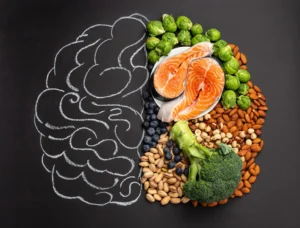Mango is a fruit that offers benefits for the skin and important functions of the body. Learn more about this tropical fruit, which is in season.
A balanced diet is characterized by including all food groups, including fruits. These offer vitamins, fiber, and other nutrients that are beneficial for health. In the hot season, what better way to consume these juicy foods than to cool off and, at the same time, prevent diseases?
Mango is a fruit that, when ripe, is characterized by its yellow and orange color. This fact indicates that the fruit offers cosmetic benefits for hair and skin, thanks to the fact that it contributes to the formation of collagen. Furthermore, its antioxidant content helps protect cells damaged by free radicals and prevents skin aging.
Marlen García, from Nutrición Integral, comments that mango is called “the king of fruits” thanks to its numerous properties and benefits. “It is associated with preventing breast cancer and prostate cancer because it has antioxidants. It also offers protection to the liver,” she adds.
The nutritionist says that the yellow and orange color of mango also means that it has a high vitamin A content. “Its high vitamin content helps with eye health and prevents diseases. But its effects will depend on the lifestyle that the person leads. In other words, it is not a miracle food, and if you spend a lot of time in front of screens, it will not correct your vision,” explains García.
In addition, ripe mango contains a higher amount of sugar and when it is green it has more fiber that helps the health of the intestines and prevents colon cancer. Any Reyes, nutritionist at Sabe a Nutrición SA, says that fiber contributes to greater satiety when eating and is recommended for people who do not go to the bathroom regularly.
Another of its nutrients is vitamin C, which helps strengthen the immune system to prevent infectious diseases. García points out that it facilitates the absorption of iron.
Mango contains other minerals such as potassium, which are good for heart health, keeping blood pressure at optimal levels, and reducing cramps. Reyes says that many people believe that this nutrient can only be found in bananas, but mango is a good source and it is best to eat it when it is ripe, neither too green nor too ripe.
The fruit also contains vitamin B6 which helps the central nervous system, making people more alert, less depressed, and sleeping better.
How to choose a good mango
There is a wide variety of mangos available in the market, but you should pay attention to things like a good aroma, firmness, a bright color, and no blemishes. Garcia suggests taking one, pressing it lightly with a finger, and if it doesn’t sink in much, it’s fine.
Another recommendation is to avoid buying it during the rainy season, as that is when larvae appear and rot. Avoid those that have stains and cuts.
Before eating them, wash them well. Remember that they have a milky, sticky substance on the skin, which, explains García, bacteria and dirt stick to more easily. If you don’t wash them, this could penetrate the pulp and contaminate them when you cut them.
Consider your health status when choosing what type of mango to eat and the portion size. “A patient with diabetes is not recommended to eat ripe mango. If your glucose is controlled, you can consume it gradually and in specific portions to prevent your blood sugar from going up,” she explains.
How is it best to eat it?
Reyes points out that we are in the best season to consume mango in adequate portions and take advantage of all its nutrients. García indicates that all fruits should be eaten naturally and whole to take advantage of the fiber.
If you want to add other ingredients to the mango pieces to better enjoy the flavor, the nutritionist recommends that you consider adding two tablespoons of seeds, a pinch of salt, low-sodium tajine, and lemon.
Although some enjoy mango juice or fresh, experts indicate that, in this way, they lose their properties. “When we add water and strain it, we remove most of the fiber that it provides us. It is a component that gives us satiety and intestinal motility,” explains Reyes.
García adds that it is also not recommended for people with diabetes, since sugar is often added to it, and consuming it could harm their health.























+ There are no comments
Add yours